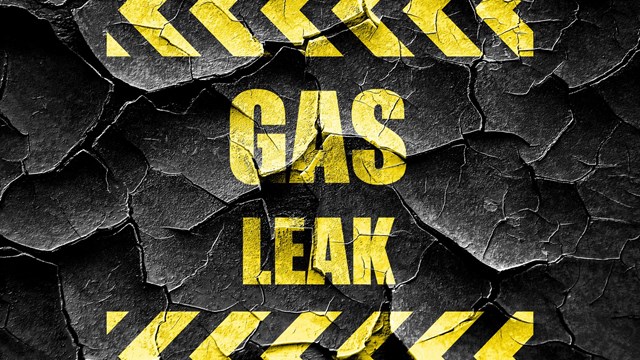
The property and casualty insurance market can provide a slippery slope for co-ops and condos in the New York metropolitan area. Insurance companies can be your best friend or worst enemy. Fortunately, co-ops and condos have a great deal of control over this determination, and there are some fairly simple recommendations on how your management company and/or board of directors can work effectively with insurance carriers to control insurance costs. Working with the right insurance broker is key to making sure you are getting the most comprehensive coverage at reasonable costs.
Current Market & Insurance Carriers
Historically insurance rates and markets are cyclical, moving from hard to soft markets, based on a number of interrelated factors.These factors can include interest rates, reinsurance capacity, industry earnings, and projections of future losses.
The current market in the New York metropolitan area is somewhat soft. The industry as a whole has been profitable, and there have been relatively few significant catastrophic losses since Katrina. All other factors being equal, commercial insurance rates over the past year or two have been steady or slightly declining.
Working against the market are some equally important factors. There are relatively few quality insurance carriers willing and able to offer coverage to residential co-ops and condos in the New York area. This limits the number of competitive premium quotes, which can be secured on a given property, especially if underwriting characteristics are not all favorable.
In addition, although carriers have been profitable, insurance company reserves are based to a large extent on estimates of future losses. It is impossible to say when a hurricane, flood, or terrorist attack might hit our area, but the actuaries assume that it is just a matter of time. If and when a category 3 or higher storm hits the New York region, insurance company profits can be wiped out for decades. These projected costs are incorporated in current premiums.
Insurance rates are determined based a review of hard information, (property limits, construction, square footage, occupancy, etc.) as well as soft information, (claims experience, risk protection and security, management, etc.).These soft factors can and should be aggressively addressed through teamwork on the part of the board of directors, the property manager, the insurance broker and the insurance carriers. It is in the best interest of all parties concerned to take a proactive role in risk management and loss control as this will undoubtedly have a significant impact on insurance rates.
Claims Experience
If claims experience for a given property is unfavorable, there are a number of potential results, all of which can cost a co-op or condominium association dearly. Some of the possibilities include:
1) Insurance company may increase rates on renewal.
2) Insurance company may increase deductibles and limit or exclude certain coverages on renewal. This could increase the potential self insurance costs on the part of the co-op or condominium association.
3) Insurance carriers can non-renew coverage. This would force a property to seek alternate quotes in an even more limited market, with the blemish of a pending non-renewal due to claims. This could result in a significant premium increase.
If claims experience is horrendous it may be difficult or impossible to secure a renewal quote without enormous premium increases and/or coverage limitations. This can have frightening consequences including loan foreclosures and bankruptcies.
Importance of Quality Loss Control
Insurance carriers are taking a far more aggressive approach in the past few years to address loss control. One major carrier in the New York region now requires written confirmation from managing agents that certificates of insurance and indemnification agreements are to be secured from all contractors. Some managing agents or boards might find this tiresome, but in essence, the insurance carrier is doing them a favor in helping to transfer a significant risk to the contractors.
Another major carrier has recently taken a more aggressive stance on confirming adequate building valuations. In the past, carriers were often willing to underwrite fire resistive properties in New York based on a replacement/rebuilding cost of $100-$150 per square foot. This figure is far below the actual rebuilding cost (insurable value), which can easily exceed $200/square foot in New York. Underinsuring a property was not previously considered a significant risk, as the likelihood of a total or near total loss was deemed incomprehensible prior to 9/11. By insuring to accurate valuations, we reduce the risk of becoming a self insurer in the event of a catastrophic loss.
Solid Claims Management Tactics
How then do we take this pro-active role in reducing claims? One method is through risk transfer. The majority of the exposure on all construction, renovation, repair and service work can be transferred to the providers by obtaining proper certificates of insurance. No contractor should be permitted on the premises before providing adequate evidence of general liability and workers compensation insurance in the form of a certificate of insurance. The certificate must be current, and must name the co-op or condo and the property management firm as an additional insured. The individual unit owner should be named as an additional insured as well if work is being done on their behalf. In addition, hold harmless/indemnification agreements should be provided by all contractors—in favor of the above parties.
Commercial tenants should be required to provide similar evidence of insurance—naming the co-op or condo as well as the management company as additional insureds. Residential unit owners should be required to carry adequate homeowners' insurance.
Another method of reducing claims is providing a loss assessment review. Some insurance carriers and/or brokers will provide an engineering survey to evaluate exposures and determine potential dangers. If proper safety measures are taken, the number of claims can be significantly reduced. Many of these measures are relatively simple and inexpensive, including providing adequate lighting, safe walking surfaces, clear hallways and properly functioning security systems. Some measures are more complex and may require a trained eye to detect, such as potentially unstable construction. Some companies, including this one, provide engineering services to clients, free of charge.
Unfortunately many claims are unavoidable. However, in the long run, if greater attention is paid to loss control, the number of claims and the severity of claims should be minimized. An effective, coordinated risk management program should have a dramatic impact on premiums in a hard market or a soft market.
Alex M. Seaman is a senior vice president at HUB International Northeast, a New York-based insurance brokerage specializing in the real estate industry.






Comments
Leave a Comment